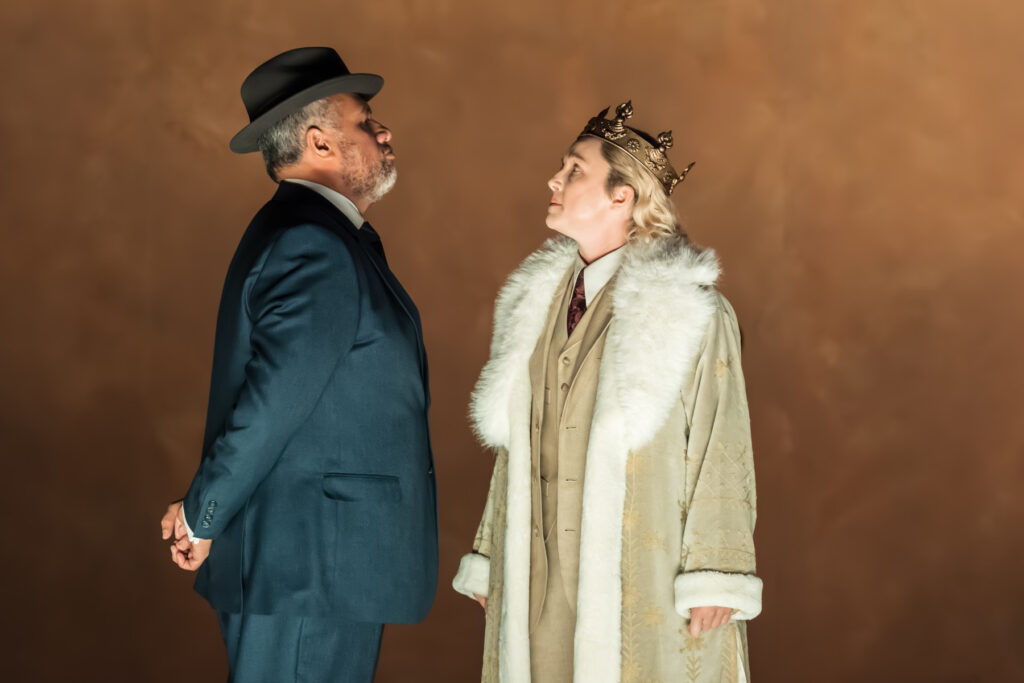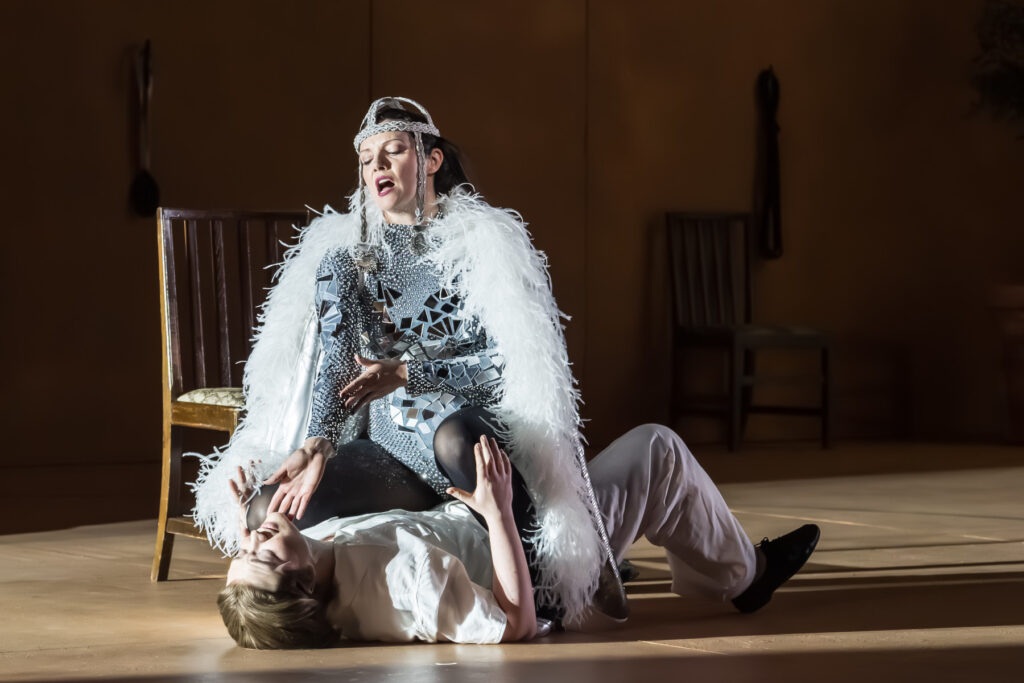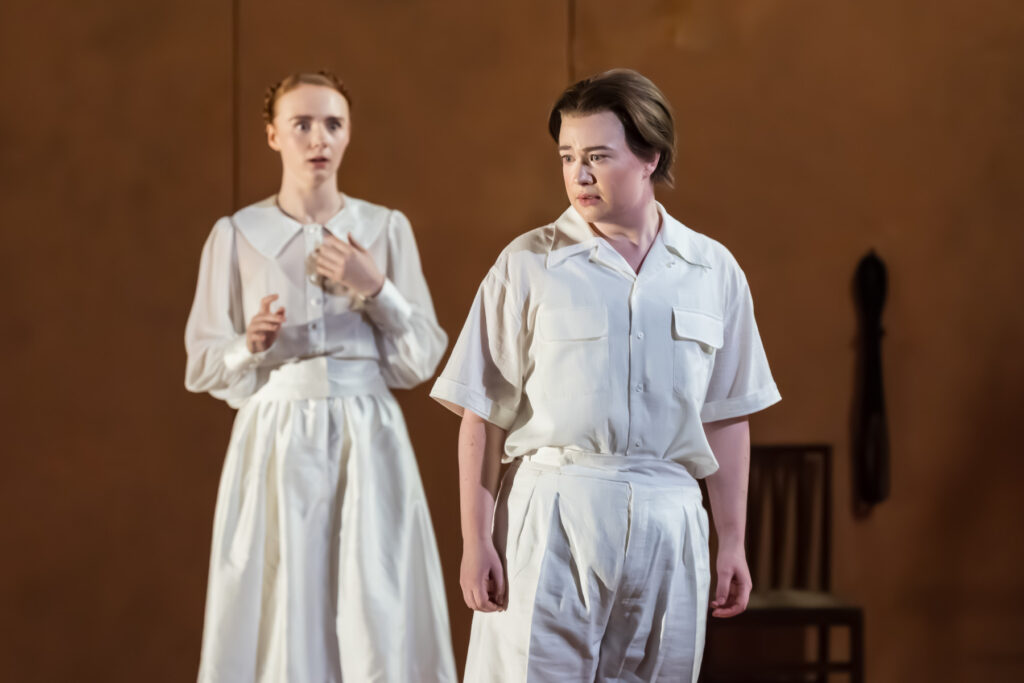The Royal Opera House continues its series of Handel’s operas and oratorios premiered at the theatre which once stood on the same site with Giustino (1737). Coming from the end of the composer’s operatic career when audiences were tiring of Italian opera seria, it received few performances in his lifetime and hasn’t been revived anywhere much since. (For all that the present may be a new golden age for Handelian opera performance, that really only extends to regular productions of, at most, 10 of his 39 surviving Italian stage works.)
David Bates certainly believes in this score, driving his superbly alert band La Nuova Musica in a robust, strenuous account. It buzzes with energy and character, but it could let up more to find greater intimacy and subtlety, rather than in-your-face boldness of sonority. Giustino’s heart-searching aria ‘Zeffiretto, che scorre nel prato’ is a notable exception.

By the standards of the average opera seria, this libretto borders on the unintentionally ridiculous – two attempts to oust the Byzantine empress, Arianna, and her new husband, Anastasio, from the throne by the jealous Vitaliano and then by their own scheming, Iago-like general Amanzio, are punctuated by three narrative absurdities. It’s difficult to know quite what a director can do with such ludicrous turns of event as the near-savaging of Giustino’s lover-to-be, Leocasta, by a bear; a thwarted attack on Arianna by a sea monster (even if in probable allusion to such a literary pedigree as the orc of Orlando furioso); and the revelation by a speaking volcano that Vitaliano is the brother of Giustino, which occurs after the latter’s defeat of the former in waging war on behalf of Arianna and Anastasio. Joe Hill-Gibbins’s production comically plays them up explicitly as pantomime effects, and it’s a neat trick to make the sinister-looking bear none other than the wicked Amanzio in costume.
But these are only brief flashes of entertainment. Overall, there’s no obvious coherence in the production’s elements, failing to provide much insight into the drama. It’s set in the 1920s, but without reference to any specific context within that era, and appears to be boxed in a gym with ropes suspended from hooks and pulleys, though no reason is evident for that setting. A mural shows part of a wheel of fortune allegory, in deference to the cameo appearance of La Fortuna to the young Giustino to reveal his predestined greatness. The chorus – unaccountably dressed in white – resemble catechumens or spirits as much as athletes or, simply, courtiers. Importing such extras is technically superfluous in any case, since the coro sections would have been taken in Handel’s performances by the vocal soloists in ensemble, even if the number of such movements is unusual in an opera seria.

The expanded chorus adds to the hectic musical impression in this performance, and the entrance of the brass through the set’s doors onto the stage for those and some other numbers, as well as the arrival through them of other characters from time to time, tends to be distracting, and begs the question from what wider world they are intruding on the indeterminate closed-in space we see on stage. Lack of coherence is further exacerbated by the curious projection of the title and credits at the start, and subsequent descriptions of the scenes, on to the back wall in Italian, rather than solely in the surtitle displays. It creates an episodic effect, as though we are supposed to be watching a staged film but which does not appear to be followed up in the choreography or set as laid out in practice. The division of the three acts of Handel’s original into two parts around the interval here as ‘Innocence’ and ‘Adulthood’ imposes a not particularly useful linear and one-dimensional trajectory upon a typically complex and inter-related Baroque operatic plot which can enthral on its own terms, even despite the presence of ludicrous narrative twists.

An excitable vocal cast emphasise the performance’s vigorous dynamism, by often declaiming their parts heavily, rather than executing Handel’s musical lines delicately and with more contrast. Polly Leech’s Giustino stands out amidst that for the creamily sustained calm and control of her interpretation. Mireille Asselin and Keri Fuge are both on fiery form as Arianna and Anastasio, encountering first Benjamin Hulett’s impassioned Vitaliano who craves Arianna for himself, and then Jake Arditti’s brittle Amanzio, sometimes wiry, at others the music threatening to run away with itself. A soft-voiced Leocasta from Esme Bronwen-Smith contrasts with the Jonathan Lemalu’s sterner vocal edge as Vitaliano’s sidekick, Polidarte. These are technically accomplished performances, and their vividness makes up for what the production lacks in colour and ideas, but this is not especially stylish, refined Handel.
Curtis Rogers
Giustino
Composer: George Frideric Handel
Libretto: Pietro Pariati
Giustino – Polly Leech; Anastasio – Keri Fuge; Arianna/La Fortuna – Mireille Asselin; Leocasta – Esme Bronwen-Smith; Amanzio – Jake Arditti; Vitaliano – Benjamin Hulett; Polidarte – Jonathan Lemalu
Director – Joe Hill-Gibbins; Designer – Rosanna Vize; Lighting Designer – James Farncombe; Conductor – David Bates; La Nuova Musica
Linbury Studio, Royal Opera House, Covent Garden, London, 7 October 2025
Top image: Mireille Asselin as Arianna/ La Fortuna
All photos ©2025 Marc Brenner